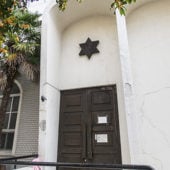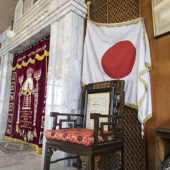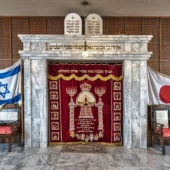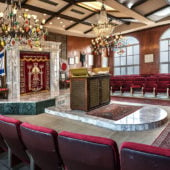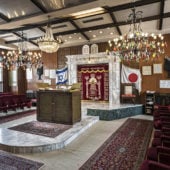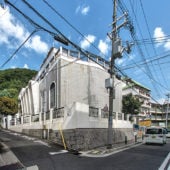Located in Japan’s 6th largest city the synagogue also serves Kyoto and Osaka.
Japan’s first Jewish synagogue was built in Yokohama by a group of fifty Jewish families who had settled there. After the 1923 Kanto earthquake that community moved to Kobe where it exists to this day. During the first half of the 20th century the Kobe Jewish community continued to grow with an influx of immigrants from Central Europe, Russia, Iraq and Syria.
Although Japan was a member of the Axis powers during World War II it was a relatively safe place for Jews fleeing the Holocaust. A 1938 Japanese government resolution prohibited the expulsion of Jews from Japan. Chiune Sugihara, Japanese Consul in Lithuania, issued visas for Jews fleeing the Holocaust, sending them to Japan and the Dutch West Indies, which was controlled by Japan. Japan resisted German pressure to institute Anti-Semitic policies.
During World War II the Kobe synagogue was destroyed by bombing so a warehouse building was used as a place to pray. In the late 1960s there was a community wide effort to raise funds to tear down the warehouse and build an actual synagogue. The cornerstone for the Ohel Shelomo synagogue building was laid in 1970. The synagogue, still in regular use, serves the Jewish population of nearby Oksaka and Kyoto.


